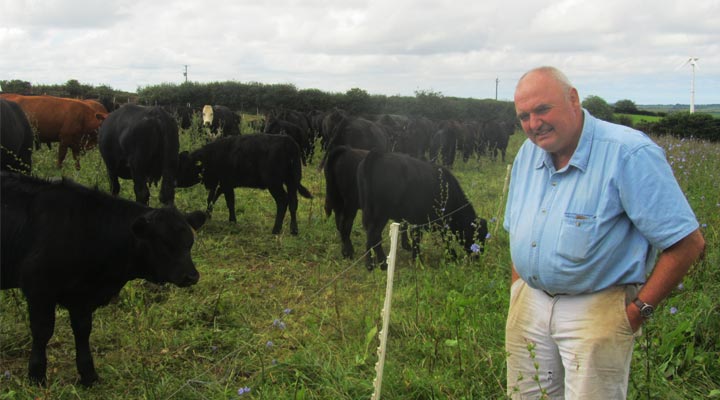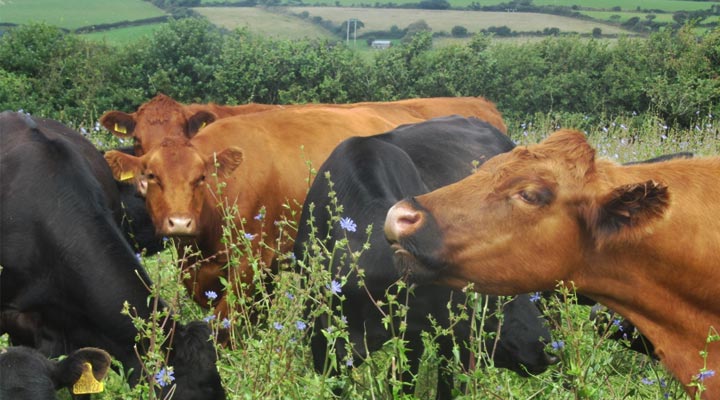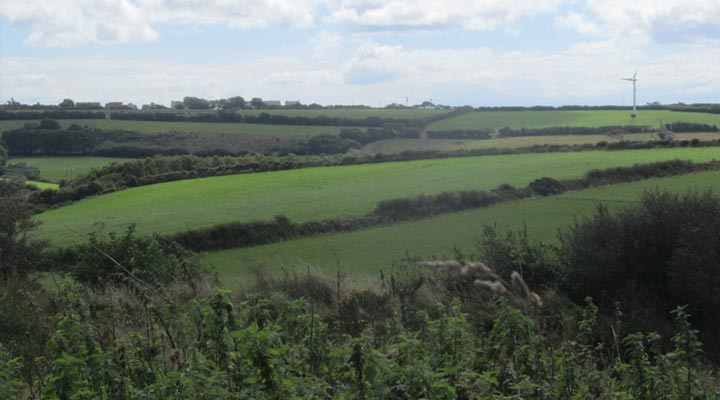Pasture for Life – Case Study – Chris Jones, Cornwall

Chris Jones came to the 69ha Woodland Valley Farm in central Cornwall in1960, where his parents ran a traditional mix of enterprises including dairy cows.
Chris initially worked off the farm as a forester until his father died in 1990, when he returned to farm in partnership with his mother.
Not wishing to be tied to daily milking, the dairy cows were sold and a commercial suckler herd established, crossing young beef cross heifers with a Limousin bull. After five years there was a herd of 90 cows, with half the calves sold as stores and the rest finished.
“We spent a lot of time and money growing and making silage and applying tonnes of artificial fertiliser,” says Chris. “Then BSE hit us.
“When the market stabilised, prices were below what we needed to make a living. So we rented out most of the land, and I went off to work as a drilling fluids engineer on the oil rigs in the North Sea.”
In 2008, Chris returned to the farm full time and started to engage with local transition initiatives, which were seeking, amongst other things, to reduce dependency on fossil fuels and imported food.
“Having worked in the energy industry it is very apparent that we are at, or near peak oil,” says Chris. “This has huge implications for the future of farming. We need to find ways of producing food in a completely different way.”
The farm had already converted to organic in 2003, and after a run of wet summers, Chris decided in 2009 to stop growing cereal crops.
“This is an ideal grass growing area, so we decided to concentrate on producing beef from grass instead,” said Chris. “We switched to Angus bulls and stopped feeding any cereals.”
The current herd of 40 cross-bred cows calve in March and April, with the calves weaned in December when they are housed. The cows outwinter on permanent pasture if conditions permit. The only additional feed any stock is offered is hay.
The yearlings go back out to grass in April and fatten off grass, finishing at around 20 months of age, weighing 600kg liveweight and grading between O and R for conformation, at fat class 3.

Mob grazing
Chris is one of the founder members of the Pasture-Fed Livestock Association. Inspired by fellow members, including grazing pioneer Ben Hollins at Fordhall Farm in Shropshire, Chris decided to try some herbal leys and mob-grazing.
He hopes this will increase soil life and organic matter content to provide greater resilience against both drought and downpours and encourage more wildlife, whilst providing nutritious feed for the cattle. March-born steers grow at 1.1kg a day and March-born heifers at 0.8kg.day, with all feed apart from rock salt, coming from the farm.
Six hectares were ploughed, cultivated and rolled in autumn 2013 before a herbal mix from Hurrells Seeds was broadcast. A further 6ha was sown last autumn.
The herd is given access to a fresh section of field once a day. Very little veterinary medicine is needed, as daily movement and the long grazing cycle helps break parasite lifecycles.
It takes two people 40 minutes to move the reel and fence posts forward, leaving six metres of yesterday’s grazing as a runback area and access to the water trough.
“Leaving the runback is an essential component of mob grazing, as it allows the cattle to trample any plant material not eaten into the ground. The worms can then pull it down into the soil.
“The other important element is rest. The cattle won’t graze to the same section graze for three months or more, giving the sward chance to recover and thrive. Most areas are only grazed three times in one year.
“Building organic matter takes time and we are taking measurements to see how much we create over the years. We carried out the Climate Friendly Foods carbon audit and this showed we are already sequestering 350 tonnes of carbon in our soil a year.
“Now we are mob-grazing we have more grass than ever before, so I shall be increasing the herd by 50% over the next two or three years, producing more output for very little extra input.”




